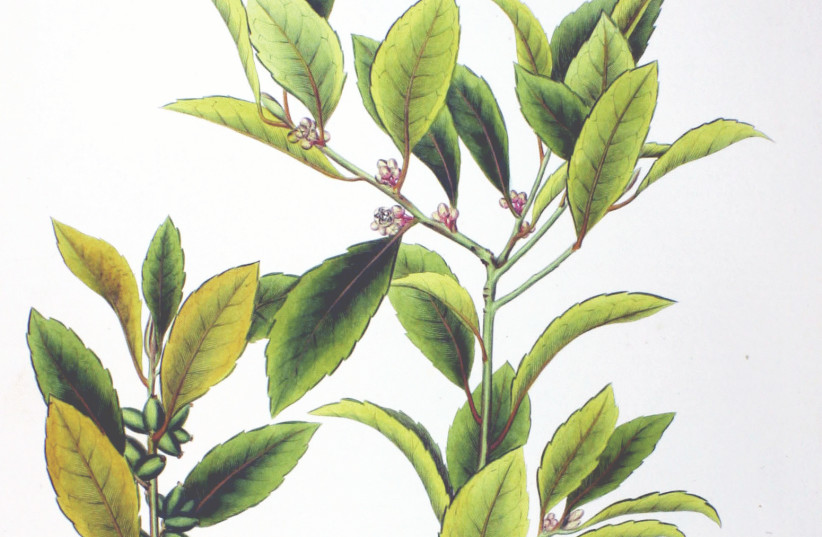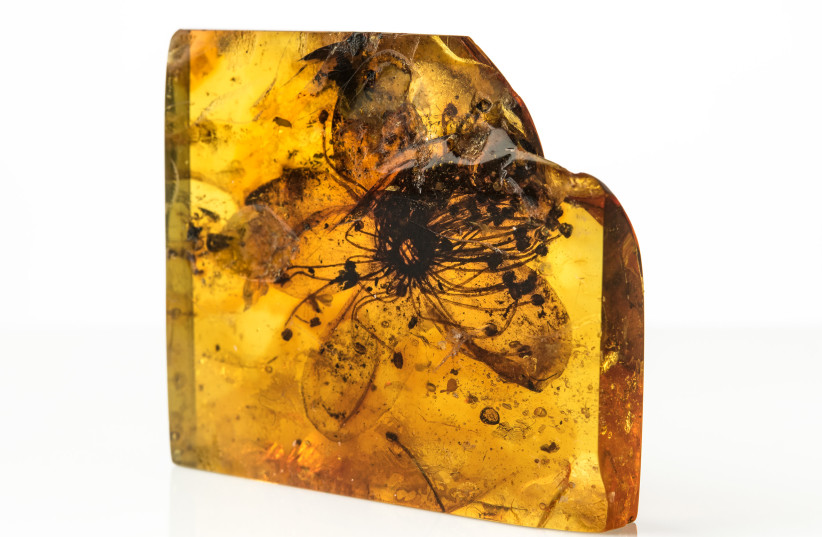33+ million-year-old fossil flower found encased in amber - study
Researchers believe the flower could originate from an ancient plant called Stewartia kowalewskii.
New photographs of the largest-known fossilized flower preserved in amber were published on Thursday in the journal Scientific Reports.
As the flower was encased in amber, it measures 28 millimeters in length. The flower dates to between 38 million and 33.9 million years ago during the Late Eocene era and was first described in 1872. Researchers believe it could originate from an ancient plant called Stewartia kowalewskii.
The authors of the peer-reviewed study, Christa-Charlotte Hofmann and Eva-Maria Sadowski, reanalyzed the flower and extracted pollen from it. They found that the flower is likely closely related to the Asian species of Symplocos. They proposed a new name for the flower: Symplocos kowalewskii.
 Symplocos (credit: PHILIPP FRANZ VON SIEBOLD AND JOSEPH GERHARD ZUCCARINI/PUBLIC DOMAIN/VIA WIKIMEDIA COMMONS)
Symplocos (credit: PHILIPP FRANZ VON SIEBOLD AND JOSEPH GERHARD ZUCCARINI/PUBLIC DOMAIN/VIA WIKIMEDIA COMMONS)Why is the fossil flower so large?
Hofmann and Sadowski suggested that the unusually large size of the flower is probably due to a large resin outpouring that would have encased it. This resin would have helped prevent organisms from growing on the flower.
The researchers noted that fossil flowers of Symplocos are rare; there are only 2 confirmed species: Symplocos bureauana Sap. and Symplocos subspicata.
“This fossil represents the first record of Symplocaceae from Baltic amber and supports affinities of its flora to evergreen broadleaved and mixed mesophytic forests of present-day East and Southeast Asia.”
Study
"This fossil represents the first record of Symplocaceae from Baltic amber and supports affinities of its flora to evergreen broadleaved and mixed mesophytic forests of present-day East and Southeast Asia," the researchers said.
"The rarity of such large-sized flower inclusions is likely due to the size of the resin outpouring and its properties, which might affect the embedding of plant organs," they added.
The largest amber-preserved flower - Symplocos kowalewskii


No comments:
Post a Comment
Stick to the subject, NO religion, or Party politics